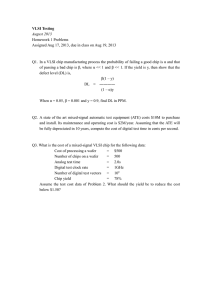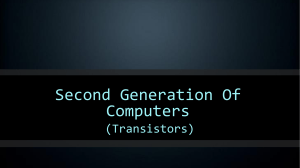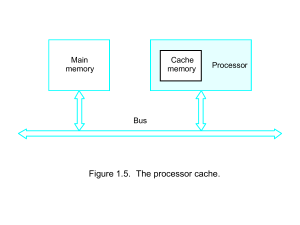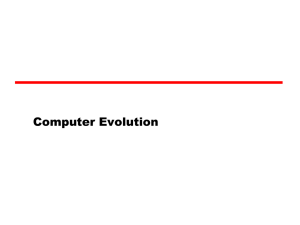Fourth Generation Computers (1971-1990): Microprocessors & PCs
advertisement
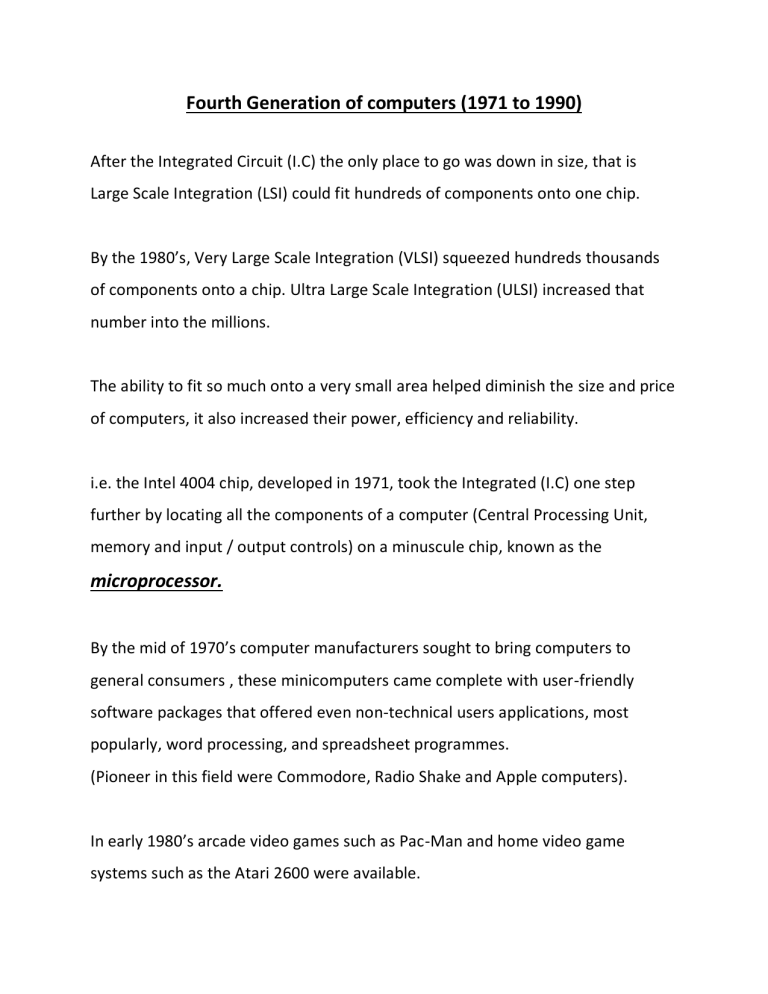
Fourth Generation of computers (1971 to 1990) After the Integrated Circuit (I.C) the only place to go was down in size, that is Large Scale Integration (LSI) could fit hundreds of components onto one chip. By the 1980’s, Very Large Scale Integration (VLSI) squeezed hundreds thousands of components onto a chip. Ultra Large Scale Integration (ULSI) increased that number into the millions. The ability to fit so much onto a very small area helped diminish the size and price of computers, it also increased their power, efficiency and reliability. i.e. the Intel 4004 chip, developed in 1971, took the Integrated (I.C) one step further by locating all the components of a computer (Central Processing Unit, memory and input / output controls) on a minuscule chip, known as the microprocessor. By the mid of 1970’s computer manufacturers sought to bring computers to general consumers , these minicomputers came complete with user-friendly software packages that offered even non-technical users applications, most popularly, word processing, and spreadsheet programmes. (Pioneer in this field were Commodore, Radio Shake and Apple computers). In early 1980’s arcade video games such as Pac-Man and home video game systems such as the Atari 2600 were available. Scale of Integration Small Scale Integration (SSI) Less than 10 transistors per IC chip Medium Scale Integration (MSI) 10 to about 500 transistors per IC chip Large Scale Integration (LSI) 500 to 20,000 transistors per IC chip Very Large Scale Integration (VLSI) 20,000 to about 100,000 transistors per IC chip Ultra Large Scale Integration (ULSI) Greater than 100,000 transistors per IC chip In 1981, IBM introduced its Personal Computer (PC) for use in the home, office and schools. The 1980’s saw an expansion in computer use in all three arenas of IBM (PC) made the personal computer even more affordable. The number of Personal Computers (P.C) in use more than doubled from 2 Million in 1981 to 5.5 Million in 1982. Ten years later, 65 Million PCs were being used. Computers continued their trend toward a smaller size, working their way dwon from Desktop to Laptop (computers which could fit inside a briefcase) / to palmtop (able to fit inside a pocket). In direct competition with IBM’s PC was Apple Macintosh line introduce in 1984 (notable for its user friendly design). In 1975, Bill Gates and a high School friend Paul Allen, wrote a version of BASIC that ran in 4 KB on the MITS Altair 8800 Computer. Soon they founded Microsoft and were creating versions of BASIC and other languages for various platforms. Their Big Break came into 1980 when IBM contracted with them to write Disk Operating System or DOS for its new PC. The IBM also gave Microsoft rights to sell versions of DOS to other manufacturers. In 1985 the Microsoft Corporation the Microsoft corporation introduced Microsoft Windows, a graphical user interface that gave MS-DOS-based computers many of the same capabilities of the Macintosh. With the upgraded version of Windows released in 1995, windows became the dominant operating environment for personal computers. As computers became more widespread in the workplace, new ways to harness their potential development. As smaller computers became more powerful, they could be linked together, or networked to share memory space, software, information and communicate with each other. Networked computers allowed individual computers to form electronic co-ops. Using either direct writing called a Local Area Network (LAN) or telephones lines. These networks could reach enormous proportions. A global web of computer circuitry, the Internet, for example, links computers world-wide into a single network of information. The most popular use today for computer networks such as Internet is electronic mail, or E-mail, which allows users to type in a computer address and sends messages through networked terminals across the office or across the world. Advantages: 1. Smaller in size as compared to previous generations of computers. 2. Even more reliable Second Generation computers. 3. Even lower heat generated than third Generation computers. 4. Much faster in computation than previous generations computers. 5. Maintenance cost is low because hardware failure is rare. 6. Easily portable because of smaller size. 7. Totally general purpose 8. Less power requirement than previous generation computers. 9. Manual assembly of individual components into a functioning unit not required, so human labour and cost involved at assembly stage reduced drastically. 10. Commercial production was easier and cheaper. 11. Cheapest among all generations. 12. No air conditioning required in most cases. Disadvantages: 1. Highly sophisticated technology required for the manufacturer of LSI VLSI and ULSI chips. * Sophisticated (develop to a high degree of complexity / made in complicated way / highly developed) / highly developed and produced with a high degree of skill and knowledge. Huge scale compromise (VLSI) is the path toward organizing or embedding an immense number of transistors on a singular silicon semiconductor microchip. VLSI development was considered in the late 1970s when top tier level PC processor microchips were being chipped away at. VLSI is a successor to immense scale compromise (LSI), medium-scale blend (MSI) and little scale consolidation (SSI) progressions.
